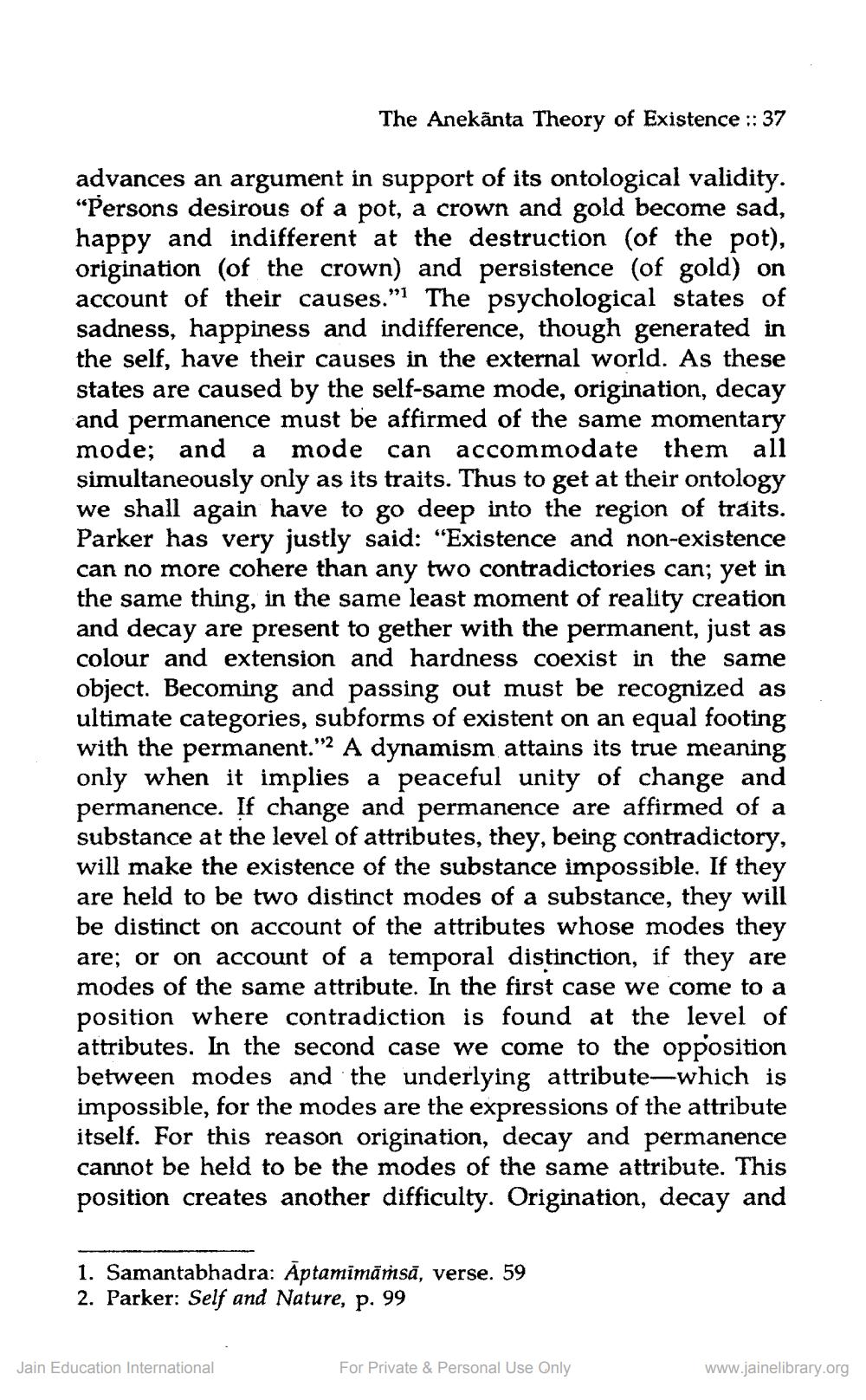________________
The Anekānta Theory of Existence :: 37
advances an argument in support of its ontological validity. "Persons desirous of a pot, a crown and gold become sad, happy and indifferent at the destruction (of the pot), origination (of the crown) and persistence (of gold) on account of their causes."1 The psychological states of sadness, happiness and indifference, though generated in the self, have their causes in the external world. As these states are caused by the self-same mode, origination, decay and permanence must be affirmed of the same momentary mode; and a mode can accommodate them all şimultaneously only as its traits. Thus to get at their ontology we shall again have to go deep into the region of traits. Parker has very justly said: "Existence and non-existence can no more cohere than any two contradictories can; yet in the same thing, in the same least moment of reality creation and decay are present to gether with the permanent, just as colour and extension and hardness coexist in the same object. Becoming and passing out must be recognized as ultimate categories, subforms of existent on an equal footing with the permanent."2 A dynamism attains its true meaning only when it implies a peaceful unity of change and permanence. If change and permanence are affirmed of a substance at the level of attributes, they, being contradictory, will make the existence of the substance impossible. If they are held to be two distinct modes of a substance, they will be distinct on account of the attributes whose modes they are; or on account of a temporal distinction, if they are modes of the same attribute. In the first case we come to a position where contradiction is found at the level of attributes. In the second case we come to the opposition between modes and the underlying attribute—which is impossible, for the modes are the expressions of the attribute itself. For this reason origination, decay and permanence cannot be held to be the modes of the same attribute. This position creates another difficulty. Origination, decay and
1. Samantabhadra: Aptamimārsā, verse. 59 2. Parker: Self and Nature, p. 99
Jain Education International
For Private & Personal Use Only
www.jainelibrary.org




